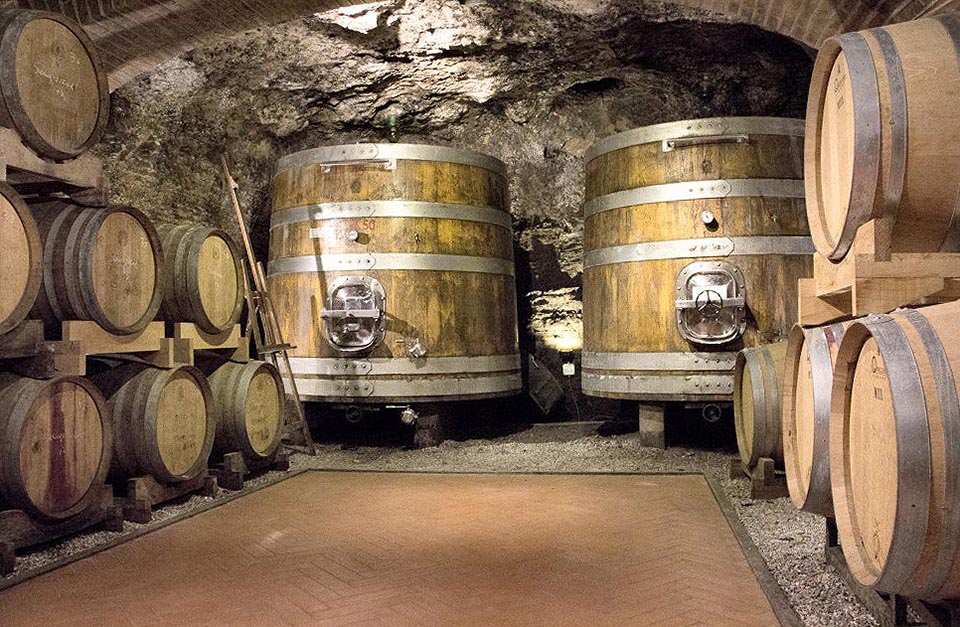
Did you know that a third of the world’s wine comes from Italy? Looking around the local shops, you would never have guessed. Most of the supermarkets around here have few Italian wines on offer. One well-known supermarket in Central Pattaya appears to have none at all.
The Etruscans and the Greek settlers produced wine in Italy long before the Romans got started, with the result that Italy has some of the oldest wine-producing regions in the world. Today there are over 45,000 wineries in Italy. Grapes are grown almost everywhere and it’s estimated that there are more than a million vineyards throughout the length of the country. There are thousands of different Italian wine grapes too, including grape varieties rarely seen elsewhere.
Italian labels can be confusing for the wine novice because the dominant name on the label could be that of the grape (Pinot Grigio); it could be the name of a place (Bardolino) or it could be the name of a wine region (Chianti). It could also be the name of the producer (such as Bolla). Then there are those mysterious letters such as DOCG that are tacked on like an academic degree. That’s almost what they are; because they guarantee quality and authenticity.
But what do they mean? I’ll try to explain but I shall keep it short and leave out the complicated bits. So please sit up straight and try to look as though you’re interested.
The letters DOCG (Denominazione di Origine Controllata e Garantita) are the highest classification in which winemakers must follow strict rules covering grape varieties, yield limits and winemaking procedures. Partly as a result of all these requirements, DOCG wines are generally more expensive. A bit further down the ladder are the wines labeled DOC (Denominazione di Origine Controllata) which are usually good and reliable but the rules governing their production are not quite so strict. Sometimes you’ll see IGT or IGP on the label and this classification focuses on the region of origin, rather than grape varieties, production methods or wine styles. Some of them are excellent. Finally, at the bottom of the pile there’s VdT – Vino da Tavola (“table wine”), which is usually simple rustic plonk, often sold in those huge glass bottles that weigh as much as a small dog. I always avoid them (the huge bottles I mean, not the small dogs) because the quality can be disappointing. The large bottle allows the wine to oxidize rapidly, so exercise caution if you see them discretely hidden behind the restaurant counter. If the bottle is only half full, the wine is likely to be over the hill.
La Vigna Chianti 2021, DOCG (red), Italy. Bt 609 @ Villa Markets.
Chianti (kee-AN-tee) is an Italian wine region in Tuscany. The region stretches roughly from Florence to Siena a bit further south, a distance of about thirty miles. The winemakers of the region have called their wine Chianti since the fourteenth century. At one time, Chianti was instantly recognizable by its traditional squat straw-covered bottle, called a fiasco (flask). They were used in their hundreds to decorate the ceilings of many an Italian restaurant. In my student days, it was almost de rigueur to have a few of these rustic-looking bottles around one’s room, ideally with a candle stuck in the top of each. These days, almost all Chianti comes in standard wine bottles.
Chianti is made primarily from the Sangiovese (san-jo-VAY-zay) grape and often includes 5% of the lesser-known Canaiolo Nero. This wine was vinified for three months in French oak, helping to bring out the flavour and character of the grapes. The wine is an intense dark red with lively aromas of sharp, spicy red cherry, rhubarb, white pepper and herbs. The mention of rhubarb might surprise you but it’s one of the typical aromas of wine made with Sangiovese, Italy’s most widely-planted red grape.
At only 12.5% ABV, it’s a light-bodied dry wine, with lively red fruit on the palate and only moderate tannin. It also carries the characteristic, slightly tart “Chianti bite”. You might notice a touch of coarseness on the palate. This isn’t a flaw, but a classic characteristic of Sangiovese. This makes Chianti ideal for food; not only the rich Tuscan cuisine but also pizza and pasta.
Having tasted the wine and made copious notes, I decided to try the wine with a rich lasagna but then discovered that we’d run out of suitable pasta. Instead, I tried pairing the wine with a brightly-flavoured pepperoni pizza. The two matched perfectly. This turned out to be a basic but reliable Chianti which is also good value. It sells for about nine quid in the UK. With its characteristic zesty acidity, it’s a perfect food wine but it’s not something to sip reflectively while watching the sun setting over the horizon. An ice-cold Martini Bianco is much more appropriate.





